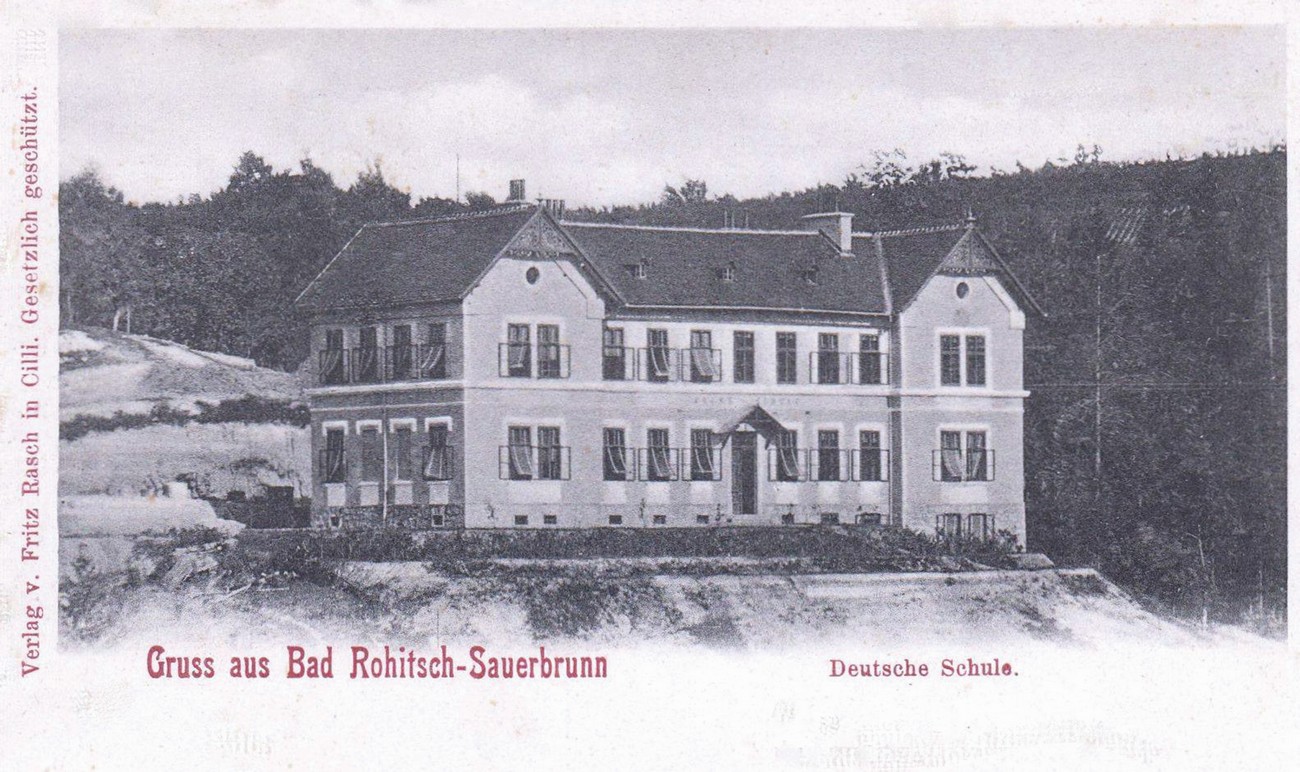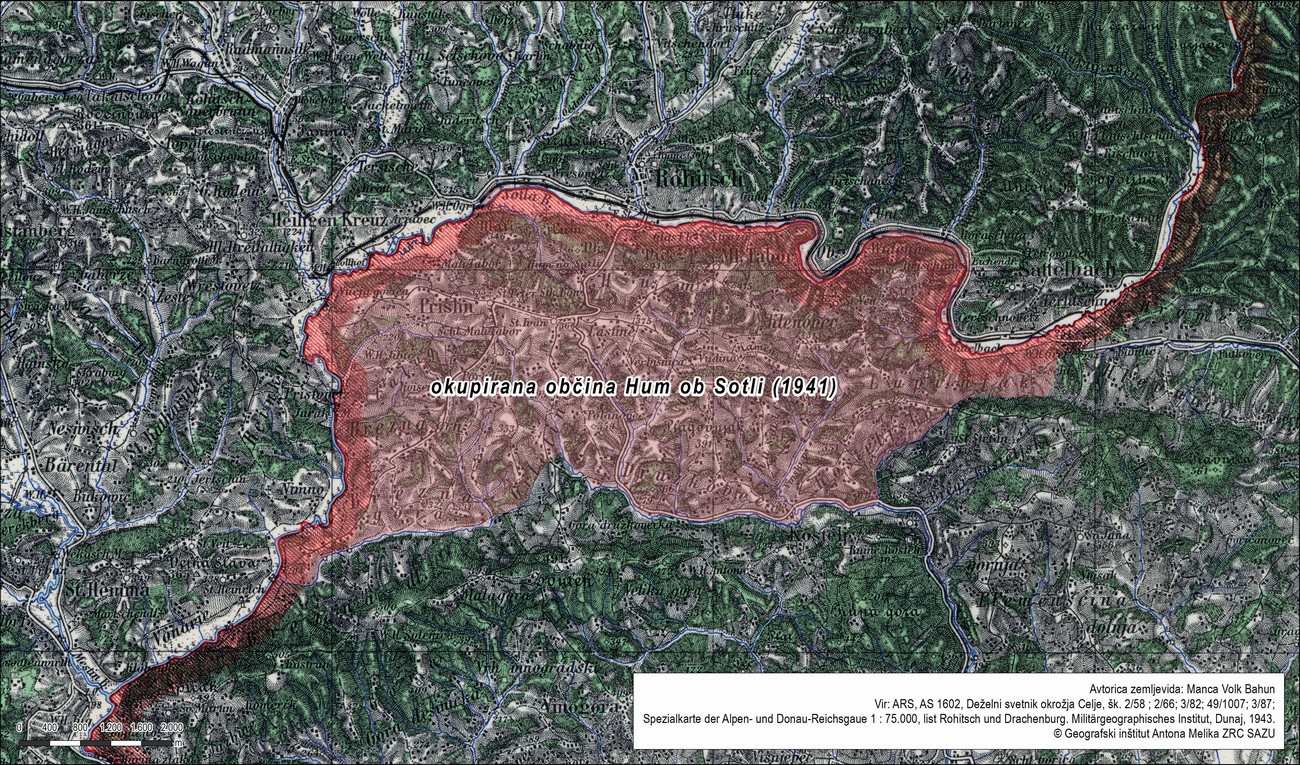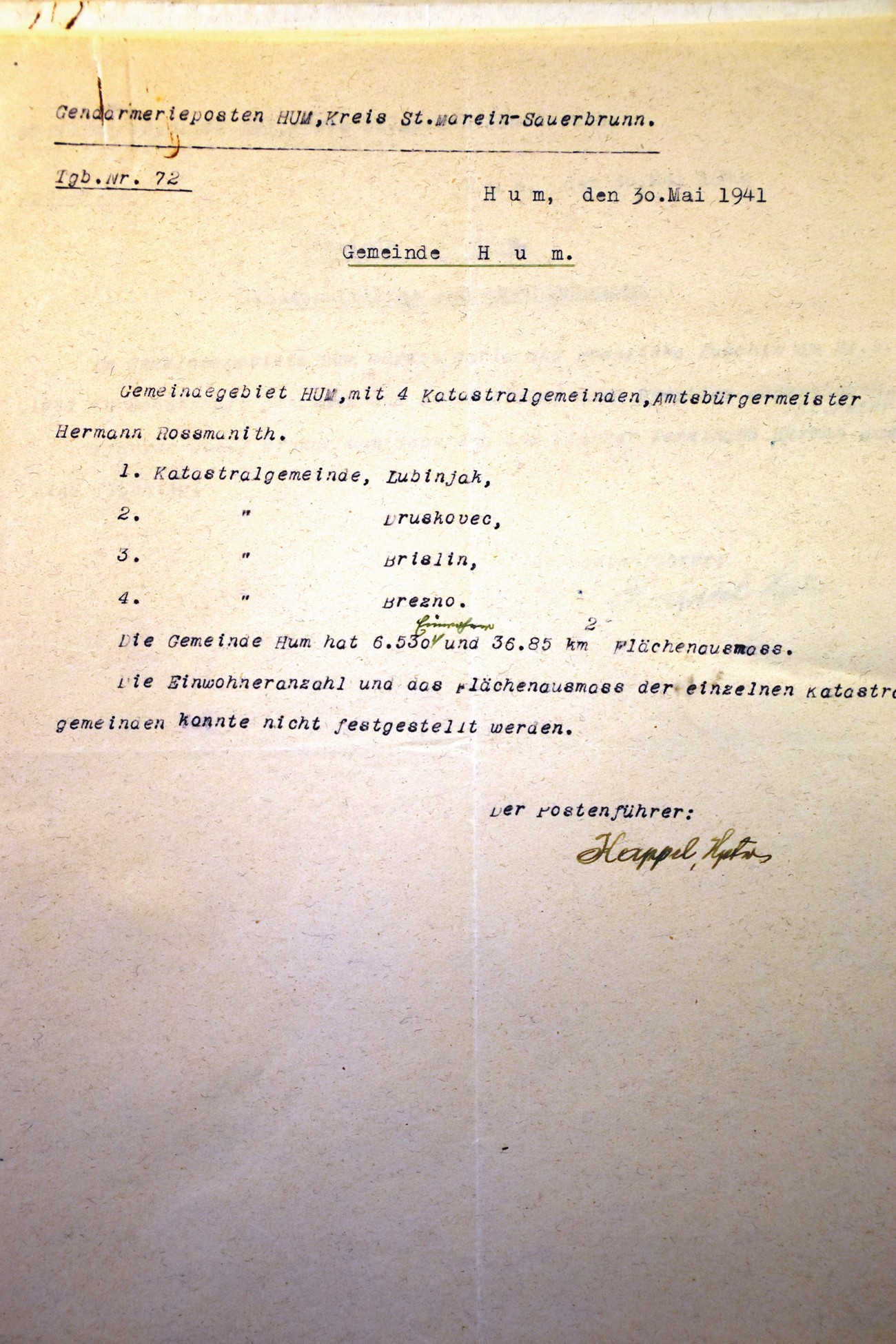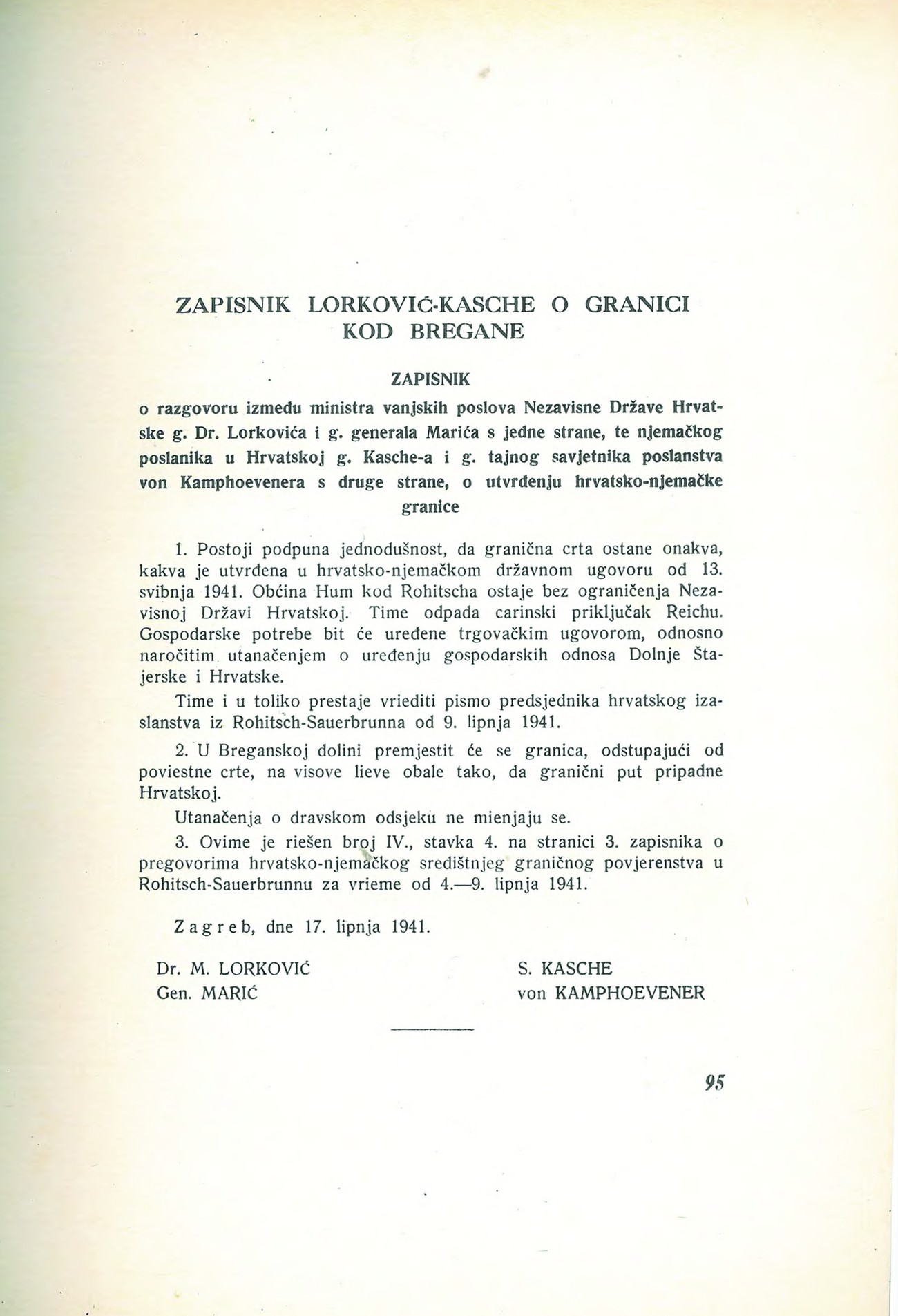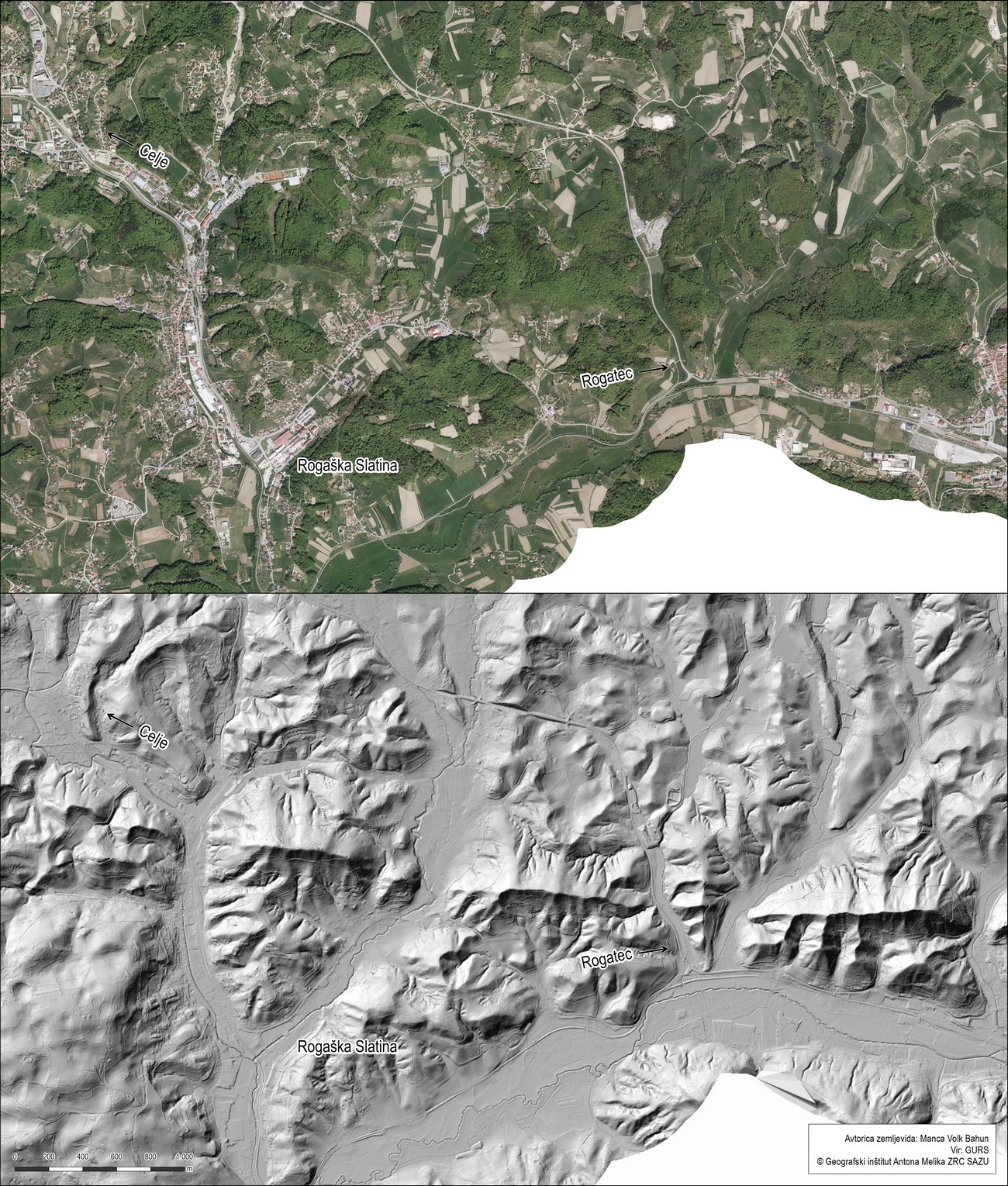During German occupation, three mixed primary schools operated more or less continuously: in Kostrivnica (four classes), in Sveti Križ (10 classes) and above the municipal building (6 sections); the latter had been built back in 1889 by the Viennese society Schulverein for Germanisation purposes. The Germans also established a home economics school and a German craft and vocational school. By the end of the war, German lessons and the dull instilling of Nazi ideology were also taking place in private homes and inns (usually of deported owners), and in the Teachers' Hall above the health resort. All school institutions shared the same fate. As the occupier began to exercise its power, Slovene teachers and head teachers were moved (first voluntarily, and later by force) or deported across the border to Croatia; immediately afterwards arrived German-speaking male and female teachers, mostly from Austria. The school and teachers' libraries containing Slovene textbooks, which the occupier's teaching staff replaced with German books, were burnt and destroyed. In Rogaška Slatina, lessons in the German language began on 1 May 1941. The children were educated very strictly and were disciplined harshly and unrelentingly. The teachers were no strangers to pulling hair, beating, punishing and locking children up after class. A post-war school report states that at the time of the liberation the pupils of Rogaška Slatina were “unruly, absent-minded, forgetful, undisciplined and brutish”; the occupier's teaching staff also rated them very poorly: “filthy, ragged, rebellious and stupid.”
In both schools in Rogaška Slatina lessons continued until the autumn of 1944, when Rogaška Slatina was turned into a construction site of defensive systems and barriers as the broader hinterland of the border was being fortified. The occupied Rogaška Slatina became the base of the construction headquarters of the 3rd Fortification Detachment, which engaged a huge number of local and foreign workers, who were housed in both schools and in the Teachers' Hall until the end of the war. Consequently, lessons in those institutions came to a halt. On 2 October 1944, the school of the Viennese Schulverein was even converted into a work camp to accommodate the workers performing fortification works in the vicinity of the Sotla River. The school building became a penal camp.
Germans occupy the Croatian Municipality of Hum na Sutli.
Few inhabitants of Rogaška Slatina and its surrounding area are familiar with the fact that when Yugoslavia was occupied in 1941 and Slovenia was carved up among Italy, Hungary, the NDH and Germany, the present-day Croatian Municipality of Hum na Sutli and its corresponding towns or hamlets of Hum, Lupinjak, Druškovec, Prišlin and Brezno were given to Germany. 6,530 (Croatian) inhabitants in an area of 36.85 square kilometres fell under Germany's rule, while the annexed territory belonged to the Šmarje District based in Rogaška Slatina. The main reason behind the annexation was industry – the Straža glassworks in Hum was highly advanced at that time and connected with the Štajerska region. Its owner was German. Thus, the border did not run along the Sotla River but along the banks of the Hrvatsko Zagorje region. In the end of June, after allegedly being persuaded by the NDH, this area was re-annexed to Croatia and the border was moved to the Sotla River.
